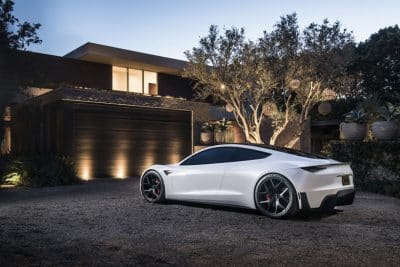The sky’s the limit, you might have been thinking, when Tesla’s stock jumped from USD 240 to about USD 340 in few days. On Oct. 23, 2018, a short while before the company said that it would preschedule the publication of third-quarter results, a well-known short seller named Andrew Left, of Citron Research, changed his outlook on Tesla (Nasdaq: TSLA). In what seemed like a 180-degree turn from his previous position, he stated that Tesla stock had become a long-term investment option. Other analysts followed his lead. At that time, the consensus estimate was a basic loss of USD 3.12 per share, down from USD 6.83 previously, and even a profit of USD 5.79 in 2019.
Analysts’ assessments were based solely on the third-quarter, when Tesla posted a profit of USD 312 million, or a basic loss of USD 1.82 per share. Strong sales meant cash reserves totaled USD 3 billion. Revenue skyrocketed thanks to more expensive Model 3 variants. The cars – priced between USD 49,000 and USD 78,000 – increased earnings by more than 130 percent to USD 6.8 billion in one quarter. What came as a bit of a surprise were the lower investments in research and development and reduced expenses for selling, general and administration, both of which affect profits. The cancellation rate for Model 3 was at 20 percent, however, based on 455,000 reservations from 2017. Tesla has so far chosen not to disclose the number of existing reservations.
That’s it about the numbers. My skepticism remains, since one quarter is hardly enough to make any long-term predictions. In those three months, Tesla only delivered more expensive Model 3 variants, as they promise high profit margins. It would be interesting to know how many cars will still be sold for USD 50,000 or USD 70,000 – the USD 35,000 base version isn’t making any money according to online statements by Tesla’s chief executive, Elon Musk, himself.
In my opinion, the company’s market cap of more than USD 58 billion is not reflective of current developments. In the next two years, around 200 electric variants by all kinds of manufacturers will become available, creating some serious competition that previously did not exist. In Norway, Jaguar has already succeeded in driving Tesla from the top spots by bringing its I-Pace to market.
Where Tesla seems one step ahead is in China. The electric carmaker has obtained a fifty-year lease on around 9.3 million square feet, or 860,000 square meters, of land in the greater Shanghai area for building a factory to produce batteries and vehicles. The company said that it foresaw no difficulties with realizing the USD 2 billion project in China. How liability would be managed in-house seems unclear.
The more things change, the more they stay the same
I don’t see Tesla’s new chairwoman, Robyn Denholm, as being the one for a clean break from company history, since she has been with Tesla since 2014, in the role of independent director. She is very knowledgeable, I will give her that, but her elevation to chair doesn’t seem to change much of the equation or might even be seen as a strategic maneuver, considering how long she has been working for the carmaker. The change meets the U.S. Securities and Exchange Commission’s requirement that Tesla needs a new chair, but this should have meant a fresh face not previously affiliated with the business. Plus, many high-level managers are still leaving.
…
read more: the H2-inernational issue will be published in February 2019
Risk warning
Share trading can result in a total loss of your investment. Consider spreading the risk as a sensible precaution. The fuel cell companies mentioned in this article are small and mid-cap ones, i.e., they may experience high stock volatility. This article is not to be taken as a recommendation of what shares to buy or sell – it comes without any explicit or implicit guarantee or warranty. All information is based on publicly available sources and the content of this article reflects the author’s opinion only. This article focuses on mid-term and long-term prospects and not short-term profit. The author may own shares in any of the companies mentioned in it.
Written by Sven Jösting



























0 Comments